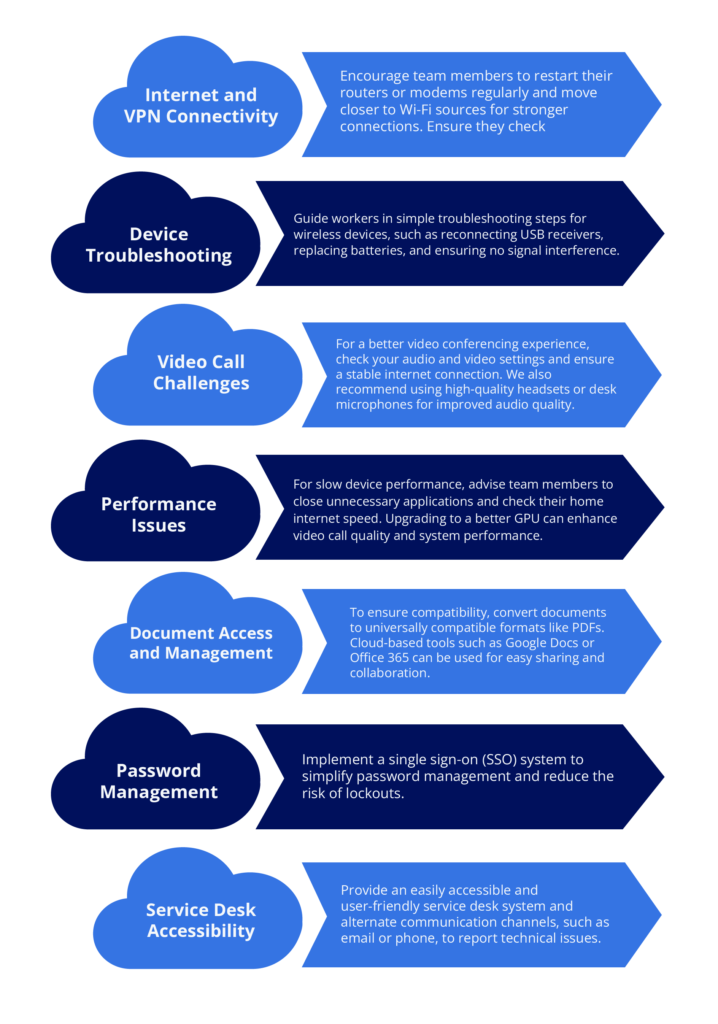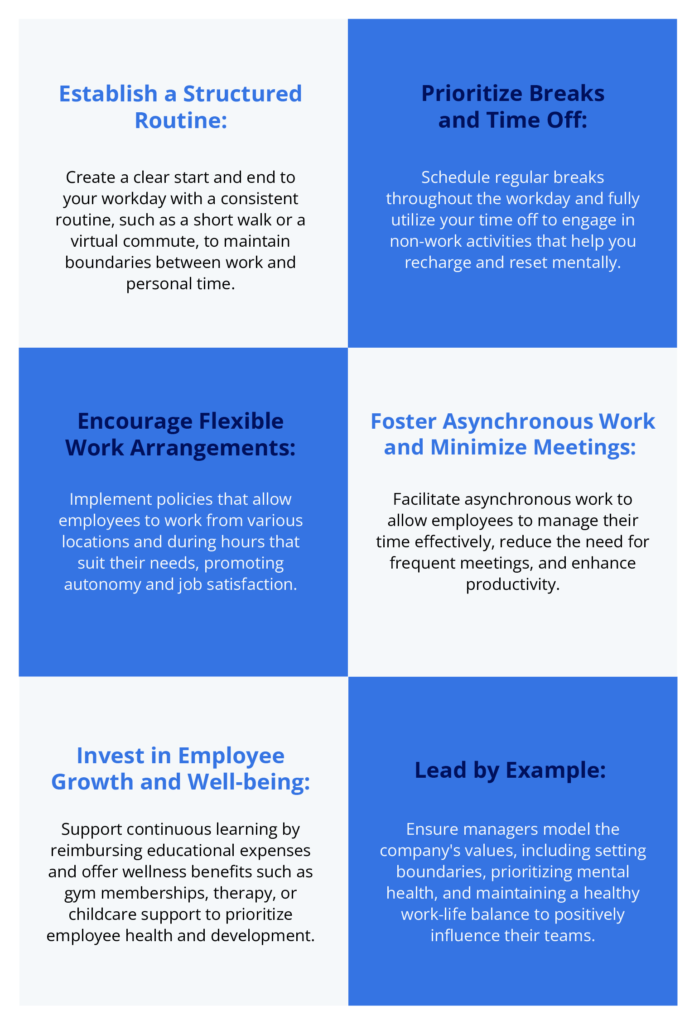Remote work is becoming increasingly common, and managers recognize the benefits of distributed teams.
According to Upwork’s Future Workforce Pulse Report, hiring managers have seen increased employee productivity due to remote work. Due to its effectiveness and perceived benefits, about 36.2 million workers are expected to be fully remote by 2025.
Although having a distributed workforce can provide clear advantages, it also brings new management challenges.
Fortunately, these challenges can be overcome with simple yet effective management strategies.
This article will detail seven of the most common challenges of managing remote workers and explain how to overcome them successfully.
Challenge 1: Communication Barriers When Managing Remote Workers
A remote sales team heavily relies on virtual tools to communicate with each other. However, this reliance on digital means can have positive and negative effects.
Emails can be easily overlooked or misinterpreted, and instant messages might arrive during peak work hours, only to be forgotten later.
Despite these challenges, creating effective communication practices for your remote team is entirely achievable with the right strategies and tools.
Here are some best practices to overcome this:
- Prioritize Empathy: Take extra care with your tone in all written communications. Aim to be friendly, relatable, and positive. A little empathy goes a long way in making messages more human. Even when you need to be assertive, maintain courtesy.
- Regular One-on-One Meetings: One-on-one video meetings are vital for transparent communication and feedback. Regular, individual check-ins ensure alignment and provide a platform for addressing concerns, not just when issues arise but as a standard practice.
- Select a Central Communication Hub: Choose a primary platform for updates and communication. This hub allows for asynchronous interaction, keeping everyone informed and accountable. Complement this hub with tools like email and chat for a comprehensive communication strategy.
- Set Clear Communication Expectations: Clearly articulate how the team should communicate, including methods, timing, and appropriate contacts for different updates. Establishing mutual expectations helps everyone to participate confidently and effectively.
Challenge 2: Building Trust and Team Cohesion
The shift from office to home raises concerns for some managers about accountability and productivity.
Will employees be as diligent and focused when working remotely?
Interestingly, these concerns often prove to be unfounded. Many sales managers report increased productivity in remote settings due to fewer unnecessary meetings, flexible schedules, and no commute time.
However, establishing trust doesn’t mean sacrificing oversight. It’s about striking the right balance between providing autonomy and ensuring accountability.
Here are some best practices:
- Define Deadlines and Deliverables: Set clear expectations for tasks and deadlines to avoid frustration later on. Understand any delays or setbacks and have a process for team members to request additional support or extensions.
- Communicate the Big Picture: It’s common for remote workers to get lost in their tasks and lose sight of the bigger picture. To keep everyone motivated and focused, it’s essential to regularly remind the team of the overall project goals and how their contributions fit into them.
- Ensure Timely and Correct Compensation: Compensation issues can negatively impact trust and morale. Late, missing, or incomplete payments can significantly affect team cohesion and loyalty. Honoring payment agreements punctually and accurately when working with independent contractors is especially important.
Challenge 3: Maintaining Productivity
Managing productivity in remote teams can be challenging, but recent reports suggest that most sales managers find remote work smoother now than when teams first transitioned.
Nonetheless, it is crucial to balance oversight and autonomy to ensure that productivity remains high.
To help you get the most out of your remote sales team, here are some strategies to consider:
- Regular, Structured Check-Ins: Implement scheduled check-ins for progress updates and to address any challenges. This keeps everyone aligned and supports open communication.
- Recognize and Value Team Members: Show appreciation for hard work and achievements. Recognizing efforts and celebrating milestones can significantly enhance motivation.
- Optimize Remote Workspaces: Encourage team members to create a dedicated, distraction-free work area. Requiring ergonomic chairs or second monitors can significantly improve focus and efficiency.
- Set Clear Key Performance Indicators (KPIs): Use KPIs to measure progress towards goals. Clear metrics help maintain focus and identify areas needing improvement.
- Feedback and Personal Development: Regular feedback sessions and opportunities for professional growth are crucial for keeping team members engaged and focused on their goals.
- Streamline Tools and Processes: Regularly evaluate and optimize the tools and processes. Simplifying and integrating tools can prevent confusion and improve workflow.
- Data-Driven Insights for Improvement: Analyzing team performance using analytics can help tailor support and training to individual needs, ultimately enhancing the team’s productivity.
Challenge 4: Technical Issues and Support
Many remote workers worry about technology malfunctions and being unable to handle them without technical assistance.
However, common technical issues can often be resolved with straightforward solutions. Companies that employ remote workers can offer their team members tools and procedures to help them troubleshoot and prevent problems.
Here are some primary solutions for common technical issues:

Challenge 5: Time Zone Differences
A workforce comprising remote workers from various nations has provided companies incredible diversity, accessibility, and opportunities.
However, managing a remote sales team across different time zones can be challenging.
Being a part of a silent team that doesn’t use chat, emails, video conferences, or other means of communication can create a sense of isolation and hinder our ability to work together effectively.
To overcome these challenges and collaborate effectively, here are some tips:
- Respect Individual Work Hours: Encourage team members to share their preferred work hours, whether they are early birds, night owls, or prefer split shifts. Respecting these hours is crucial for maintaining work-life balance and ensuring everyone is productive during peak hours.
- Implement Auto-Responders: During off-hours or deep work sessions, encourage status updates in communication tools and out-of-office emails to inform colleagues of availability and expected response times.
- Shared Calendars for Visibility: Consider creating a shared Google Calendar for your team to mark national holidays, personal time-offs, and vacation days. This will help you plan collaboration sessions while being mindful of everyone’s local holidays.
- Communication and Collaboration Playbook: Create a playbook that outlines communication channels, project management tools, and asynchronous communication practices.
- Rotating Meeting Times: Fairly distribute meeting times across time zones using tools like World Time Buddy to avoid inconveniencing any team.
- Efficient Meeting Protocols: Consider whether a meeting is necessary before scheduling it. Use video messages to share information that doesn’t require real-time interaction and provide a clear agenda for scheduled meetings. Record meetings for those who can’t attend to keep everyone informed.
Challenge 6: Work-Life Balance
Maintaining a healthy work-life balance is crucial for remote workers, as professional and personal boundaries can often blur.
Employees and employers are responsible for establishing practices that support this balance.
Here are some practical ways that can help remote workers keep their work and personal lives separate:

Challenge 7: Employee Engagement and Retention
Modifying and recreating conventional approaches that promote a favorable and comprehensive company culture is essential to ensuring efficient employee engagement and retention while working remotely.
Even though face-to-face interactions are rare, it’s still achievable to establish an active and united remote work atmosphere.
Here are some tactics you can apply:
- Celebrate Successes Creatively: Utilize virtual platforms to publicly acknowledge achievements and milestones through creative recognition, such as virtual high-fives or shoutouts, to foster a sense of inclusion and appreciation.
- Prioritize Video Meetings for Personal Connection: While digital messages are efficient, encourage video meetings for more in-depth discussions to enrich professional relationships and reinforce team dynamics through personal interaction.
- Maintain Transparency with Regular Updates: Keep all team members informed about company goals, progress, and important announcements to strengthen the team’s sense of purpose and unity.
- Host Virtual Events: Organize regular, informal virtual gatherings, such as a “Coffee Hour with the CEO,” where all team members can interact on a personal level to enhance camaraderie and the feeling of belonging.
- Maintain Frequent Communication with All Team Members: Conduct regular check-ins and maintain open lines of communication with all team members to help them feel as much a part of the team as possible, leading to better collaboration and engagement.
Conclusion
Managing remote workers can be challenging, but with proper strategies and tools, these obstacles can become opportunities for growth and success.
By embracing best practices, you can not only enhance team performance but also contribute to remote workers’ overall well-being and job satisfaction. This, in turn, leads to a more resilient and successful organization.
If you want to build a remote sales team, CloudTask Marketplace can assist you.
CloudTask makes finding qualified remote sales candidates in Latin America for your RevOps job vacancies easy, taking advantage of minimal time zone differences and competitive rates.
You can browse over 500 video profiles, work experience, and monthly rates of remote candidates looking for RevOps roles, saving you significant effort in your search process.
Visit CloudTask Marketplace today to start building your ideal remote sales team.








